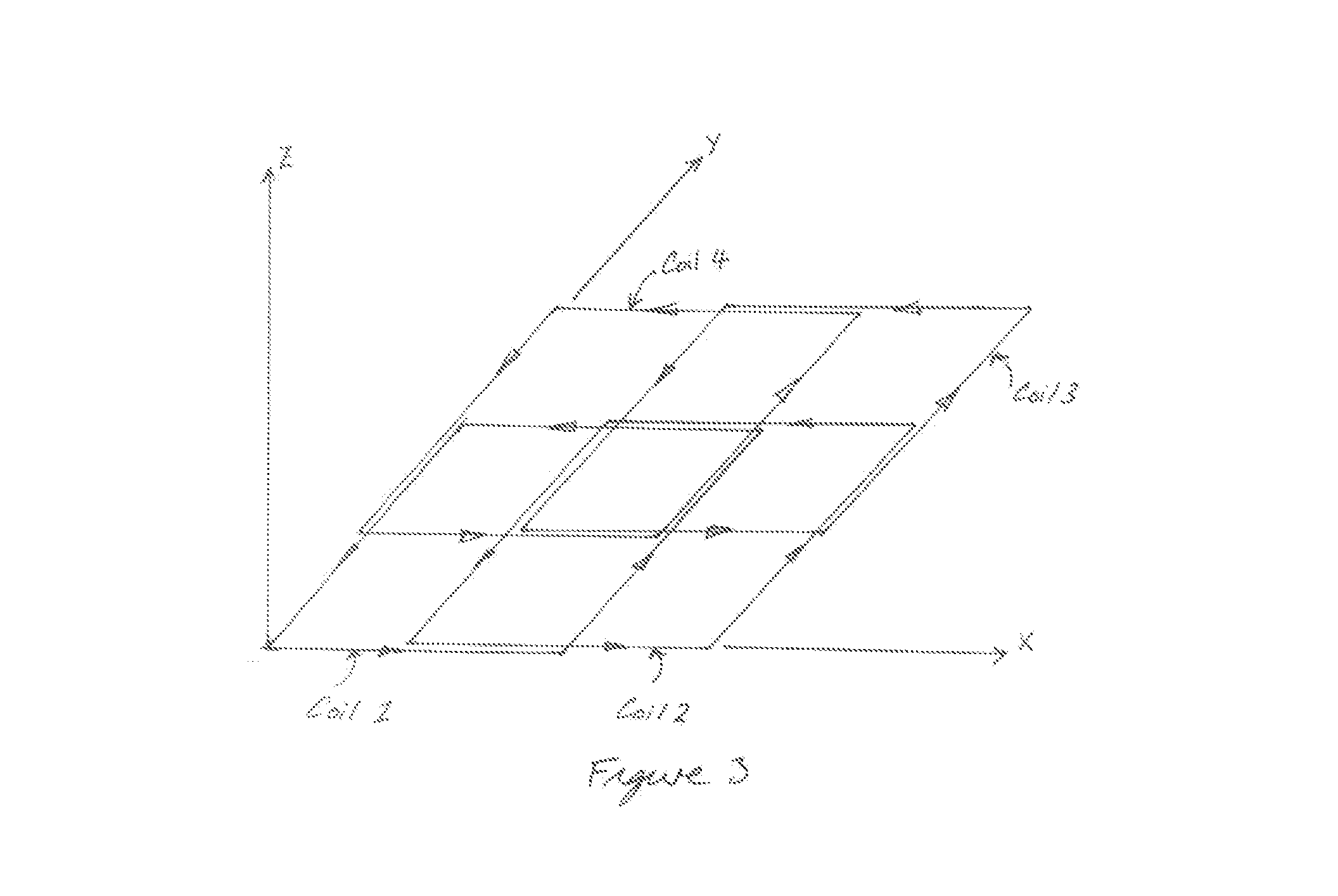Antenna design and interrogator system
an antenna design and interrogator technology, applied in loop antennas, instruments, record carriers used with machines, etc., can solve the problems of inability to three-dimensional interrogation, and inability to meet the needs of applications
- Summary
- Abstract
- Description
- Claims
- Application Information
AI Technical Summary
Benefits of technology
Problems solved by technology
Method used
Image
Examples
Embodiment Construction
[0061]FIG. 4 illustrates one embodiment of an aspect of invention. An antenna 40 is disposed to interrogate an area 41. In accordance with the present invention, the antenna 40 is adapted to be shifted (by suitable means, not shown) in any one or any combination of directions x, y and / or z. In shifting the antenna 40 around area 41, tags 42, 43, 44 and 45 may be interrogated. The line 46 and dotted lines 47, 48 and 49 show various example locations of the antenna 40 when shifted in accordance with the present invention in order to interrogate the second area 41. The single coil shown in FIG. 4, having a first area, can be shifted in the X, Y and / or Z directions in order to interrogate an arbitrarily large area. The antenna 40 may be shifted by mechanical means in accordance with an aspect of the present invention.
[0062]FIG. 5 shows an array of two coils 501 and 502 in perspective 500 and plan view 503 and their generated fields Hx, Hy and Hz when they are sequentially switched as pe...
PUM
 Login to View More
Login to View More Abstract
Description
Claims
Application Information
 Login to View More
Login to View More - R&D
- Intellectual Property
- Life Sciences
- Materials
- Tech Scout
- Unparalleled Data Quality
- Higher Quality Content
- 60% Fewer Hallucinations
Browse by: Latest US Patents, China's latest patents, Technical Efficacy Thesaurus, Application Domain, Technology Topic, Popular Technical Reports.
© 2025 PatSnap. All rights reserved.Legal|Privacy policy|Modern Slavery Act Transparency Statement|Sitemap|About US| Contact US: help@patsnap.com



